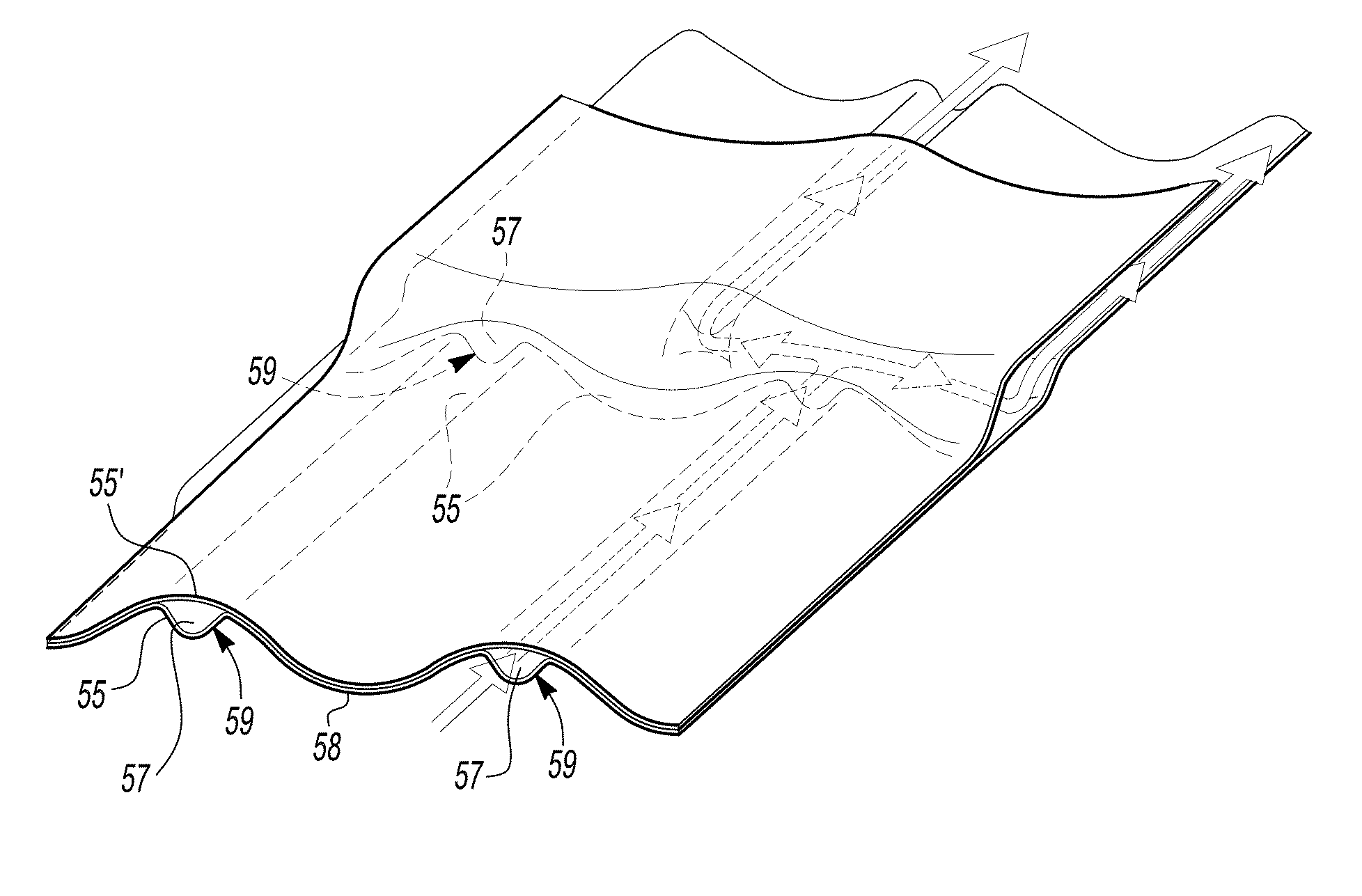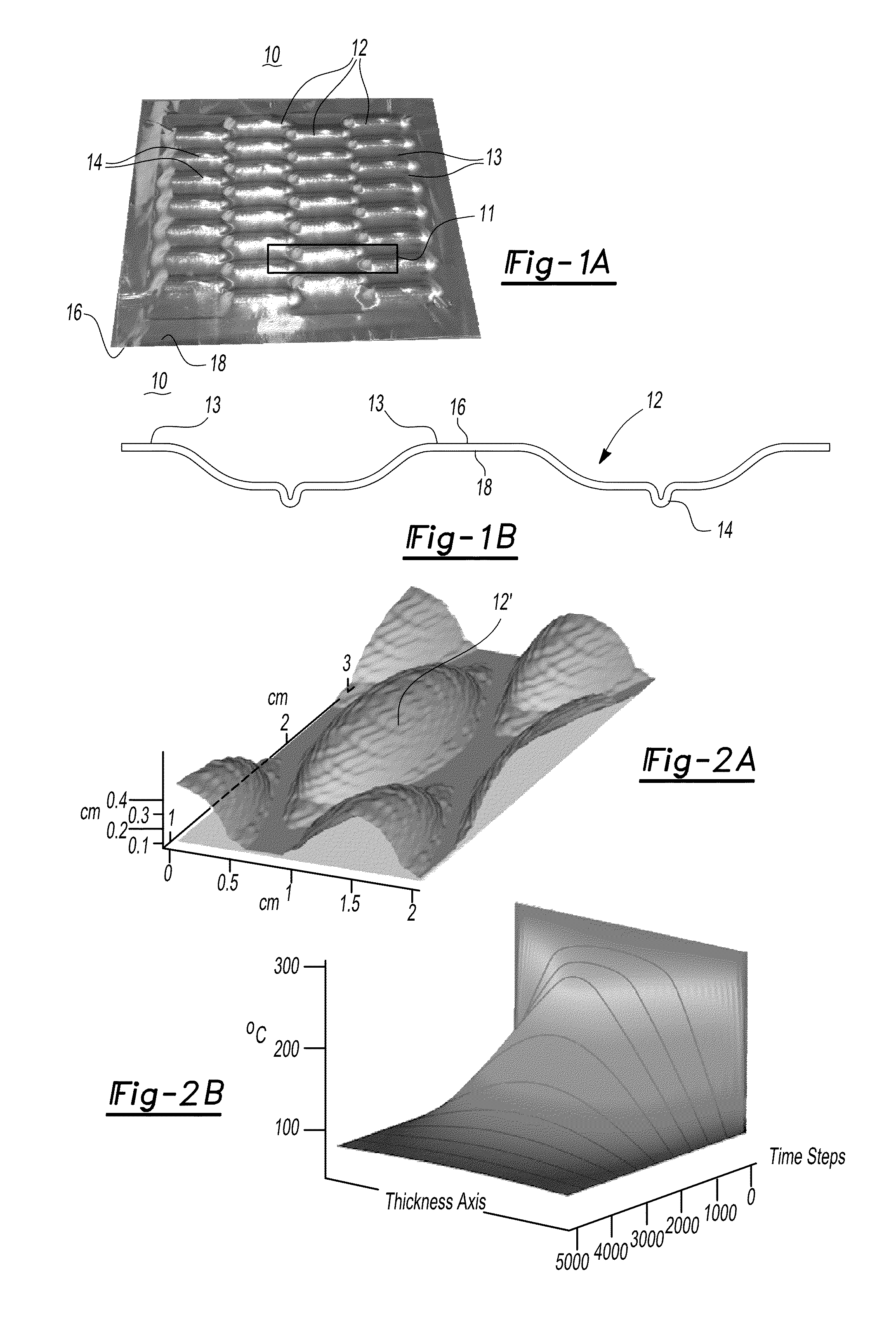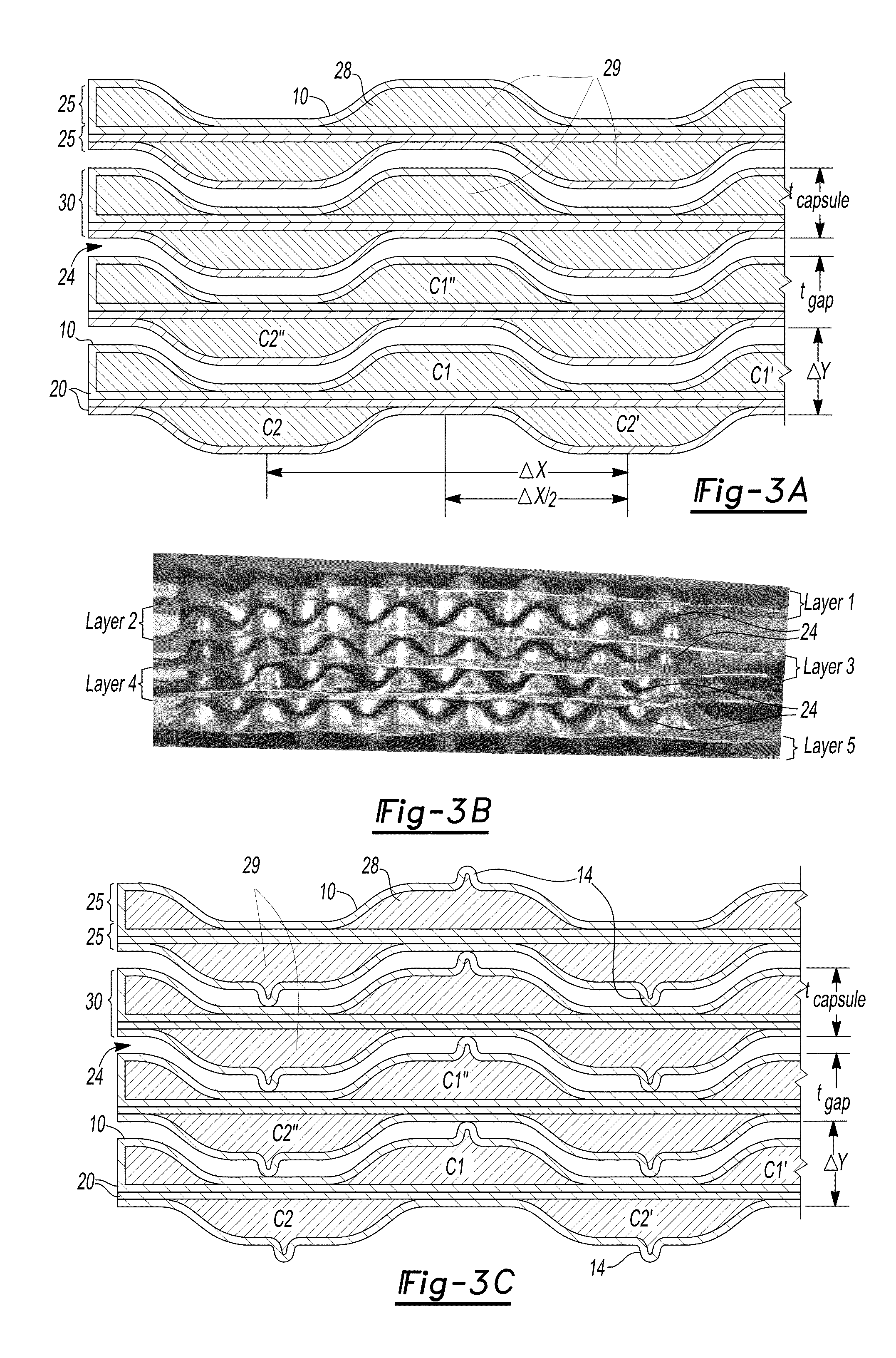Heater module including thermal energy storage mataerial
a heat exchanger and thermal energy technology, applied in indirect heat exchangers, heating types, lighting and heating apparatus, etc., can solve the problems of complex efforts to achieve good results from encapsulation techniques, tesms are very corrosive, and cannot be suitable for applications subject to more rigorous conditions
- Summary
- Abstract
- Description
- Claims
- Application Information
AI Technical Summary
Benefits of technology
Problems solved by technology
Method used
Image
Examples
example 1
Forming a Blister Pack
[0125]A first foil of an aluminum alloy (1100) having a thickness of about 0.07 mm is embossed to form a first ply. The embossing process, as illustrated in FIG. 13, may be performed using an embossing tool having a male portion 130 and a female portion 132, wherein the foil 10 is placed in-between the two portions. A force is then applied to press the two portions of the mold together. The male portion of the tool is made of a rigid and hard material (e.g., a hardened epoxy) that yields a durable tool so as to withstand the forming process. The female portion of the tool is made up of a resilient material (e.g., a foam such as a 50 mm thick closed cell foam sold under the tradename of Ethafoam™). When the press is closed and the foil is pushed by the foam and forms into the male tool portion of the tool. Wrinkling may be controlled by placing a block around the edges of the tooling. A force of about 66,000 N is used to form the first ply which contains about 3...
example 2
[0131]Blister packs are prepared by placing about 2 g of TESM containing equimolar concentrations of lithium nitrate and sodium nitrate into each of the 30 troughs of a first ply. The first ply is placed in a fixture in a press heated to a temperature of about 350° C. (e.g., at a temperature greater than about 100° C. over the liquidus temperature of the TESM). The fixture contacts and supports the first ply in the lip area of the first ply and the trough regions are in a cavity of the fixture and generally do not contact the fixture. The TESM melts within about 5 minute and fills the troughs (e.g., at least about 95% filled). The TESM containing first ply is heated for at least about 15 minutes. Any water in the TESM is removed under these conditions, such that the TESM is substantially free of water. A flat cover ply (i.e. the second ply) is then placed over the first ply. A relatively low force of less than about 3,000 lbs is applied to remove any molten TESM from the lip regions...
example 3
[0133]A heat storage device is prepared by first encapsulating a TESM sample containing 50 mole % sodium nitrate and 50 mole % lithium nitrate between two thin, flat, parallel metal foils to form a three layered sheet containing the TESM sandwiched between the foils. The TESM fills the entire space between the two metal foils. The sheet is placed in the housing of an insulated container and heated to about 280° C. (above the liquidus temperature of the TESM). At 280° C., the thickness of the TESM in the sheet is about 4 mm and two channels for flowing coolant (over each of the two flat surfaces of the sheet) each have a constant thickness of about 0.65 mm. The housing contains only the two channels and the sheet and has a predetermined volume. The TESM occupies about 75% of the volume of the housing. Coolant having an initial temperature of about 50° C. flows through the container at a constant flow rate for 30 seconds. The average initial power density of the heat storage device ov...
PUM
 Login to View More
Login to View More Abstract
Description
Claims
Application Information
 Login to View More
Login to View More - R&D
- Intellectual Property
- Life Sciences
- Materials
- Tech Scout
- Unparalleled Data Quality
- Higher Quality Content
- 60% Fewer Hallucinations
Browse by: Latest US Patents, China's latest patents, Technical Efficacy Thesaurus, Application Domain, Technology Topic, Popular Technical Reports.
© 2025 PatSnap. All rights reserved.Legal|Privacy policy|Modern Slavery Act Transparency Statement|Sitemap|About US| Contact US: help@patsnap.com



